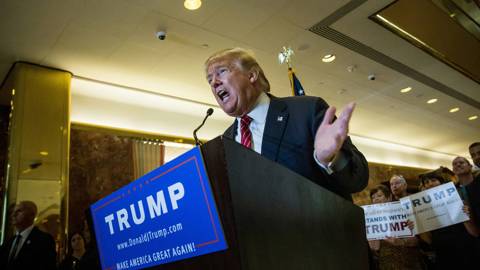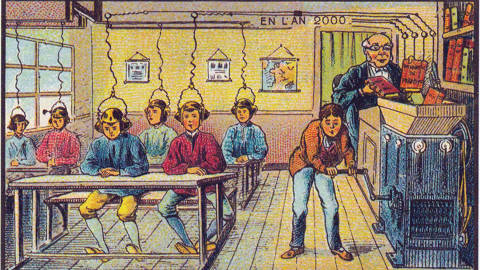There is growing consensus among economists that central banks can influence financial markets and thereby move the economy with their statements regarding future policy. This view is reflected in the greater care now given to central bank statements about the direction of policy. It also was strengthened by the market reaction last month to comments by Federal Reserve Board Chairman Ben Bernanke suggesting that the Fed would soon be backing away from its quantitative easing policy.
If the chair of the Fed and other central bankers can move markets by moving their mouths, this brings back a question that some of us raised in years past: should central banks take steps to burst asset bubbles? This proposal was often taken as a question of raising interest rates and slowing the economy as a way to deflate a bubble.
That policy would inevitably require tough trade-offs. It would mean deliberately slowing the economy and throwing people out of work now, in order to avoid the damage from a collapsed asset bubble at some point in the future. To justify the certain pain in the present, a central bank would have to be very confident in its assessment of the pain implied by a burst asset bubble in the future.
But the newly discovered central bank tool of forward guidance provides an attractive alternative to raising interest rates. If central bank heads can lower long-term interest rates just by talking about plans to keep rates low, or send them soaring as Bernanke did last month by suggesting a pullback from expansionary policies, then presumably central talk also could be used against asset bubbles.
The idea here is not to have a central bank head mutter “irrational exuberance,” but rather to have them clearly lay out the evidence for its concern about an asset bubble, coupled with an implicit or even explicit plan to take steps to counter the bubble. This means using the central bank’s research staff to carefully document the fact that prices of stock or housing have grown out of line with the fundamentals of the market. Additional research showing the likely path of the correction back toward fundamental values would also be helpful.
Suppose Alan Greenspan had openly expressed his concern about the extent to which house prices had diverged from trend values and rents and used the Fed’s pool of economists to document this fact in every possible way. Suppose he also indicated the willingness of the Fed to take steps to bring house prices back in line with fundamentals. How many people would be willing to pay $300k for a home that the Fed chair wants to bring down to $200k? It is a bit hard to believe that the Fed could bring down long-term interest rates by professing its intention to keep rates low in the future, but it can’t affect house prices by expressing its determination to bring them back in line with fundamentals.
Some economists would concede that a central bank could sink a housing or stock bubble by giving forward guidance about its intention to burst the bubble, but argue that this course is not feasible because of the politics. The argument is that the interests affected, presumably first and foremost the financial industry, are so powerful that a central banker would never be able to take the steps needed to deliberately and explicitly burst a bubble.
This is a fascinating claim. Note the incredible amount of damage to the economy and society that has resulted from the collapse of asset bubble in Europe and the United States. We have seen tens of millions of people unnecessarily being denied work or at least full-time work. In many cases period of prolonged unemployment have meant ruined lives for workers and their families. The amount of lost output will almost certainly rise into the tens of trillions of dollars. There is nothing that central banks do that could possibly be more important than to prevent the growth of bubbles whose collapse leads to this much devastation.
There is a vast literature on the importance of central bank independence. The argument that pervades this work is that a central bank must be sufficiently free of political influence that it can take the steps necessary to rein in inflation if it becomes a problem. However the damage from the collapsed bubbles in the last decade is 1-2 orders of magnitude greater than the costs associated with a typical bout of inflation.
It would be an incredible case of design failure if we have focused on making central banks sufficiently independent of democratic control so that they can raise the unemployment rate when it is deemed necessary to slow inflation, but we have not made them sufficiently independent of the financial industry so that they can burst a stock or housing bubble even when they grow large enough to threaten the health of the economy.










There is growing consensus among economists that central banks can influence financial markets and thereby move the economy with their statements regarding future policy. This view is reflected in the greater care now given to central bank statements about the direction of policy. It also was strengthened by the market reaction last month to comments by Federal Reserve Board Chairman Ben Bernanke suggesting that the Fed would soon be backing away from its quantitative easing policy.
If the chair of the Fed and other central bankers can move markets by moving their mouths, this brings back a question that some of us raised in years past: should central banks take steps to burst asset bubbles? This proposal was often taken as a question of raising interest rates and slowing the economy as a way to deflate a bubble.
That policy would inevitably require tough trade-offs. It would mean deliberately slowing the economy and throwing people out of work now, in order to avoid the damage from a collapsed asset bubble at some point in the future. To justify the certain pain in the present, a central bank would have to be very confident in its assessment of the pain implied by a burst asset bubble in the future.
But the newly discovered central bank tool of forward guidance provides an attractive alternative to raising interest rates. If central bank heads can lower long-term interest rates just by talking about plans to keep rates low, or send them soaring as Bernanke did last month by suggesting a pullback from expansionary policies, then presumably central talk also could be used against asset bubbles.
The idea here is not to have a central bank head mutter “irrational exuberance,” but rather to have them clearly lay out the evidence for its concern about an asset bubble, coupled with an implicit or even explicit plan to take steps to counter the bubble. This means using the central bank’s research staff to carefully document the fact that prices of stock or housing have grown out of line with the fundamentals of the market. Additional research showing the likely path of the correction back toward fundamental values would also be helpful.
Suppose Alan Greenspan had openly expressed his concern about the extent to which house prices had diverged from trend values and rents and used the Fed’s pool of economists to document this fact in every possible way. Suppose he also indicated the willingness of the Fed to take steps to bring house prices back in line with fundamentals. How many people would be willing to pay $300k for a home that the Fed chair wants to bring down to $200k? It is a bit hard to believe that the Fed could bring down long-term interest rates by professing its intention to keep rates low in the future, but it can’t affect house prices by expressing its determination to bring them back in line with fundamentals.
BLACK FRIDAY SALE: Subscribe for as little as $34.99
Subscribe now to gain access to insights and analyses from the world’s leading thinkers – starting at just $34.99 for your first year.
Subscribe Now
Some economists would concede that a central bank could sink a housing or stock bubble by giving forward guidance about its intention to burst the bubble, but argue that this course is not feasible because of the politics. The argument is that the interests affected, presumably first and foremost the financial industry, are so powerful that a central banker would never be able to take the steps needed to deliberately and explicitly burst a bubble.
This is a fascinating claim. Note the incredible amount of damage to the economy and society that has resulted from the collapse of asset bubble in Europe and the United States. We have seen tens of millions of people unnecessarily being denied work or at least full-time work. In many cases period of prolonged unemployment have meant ruined lives for workers and their families. The amount of lost output will almost certainly rise into the tens of trillions of dollars. There is nothing that central banks do that could possibly be more important than to prevent the growth of bubbles whose collapse leads to this much devastation.
There is a vast literature on the importance of central bank independence. The argument that pervades this work is that a central bank must be sufficiently free of political influence that it can take the steps necessary to rein in inflation if it becomes a problem. However the damage from the collapsed bubbles in the last decade is 1-2 orders of magnitude greater than the costs associated with a typical bout of inflation.
It would be an incredible case of design failure if we have focused on making central banks sufficiently independent of democratic control so that they can raise the unemployment rate when it is deemed necessary to slow inflation, but we have not made them sufficiently independent of the financial industry so that they can burst a stock or housing bubble even when they grow large enough to threaten the health of the economy.